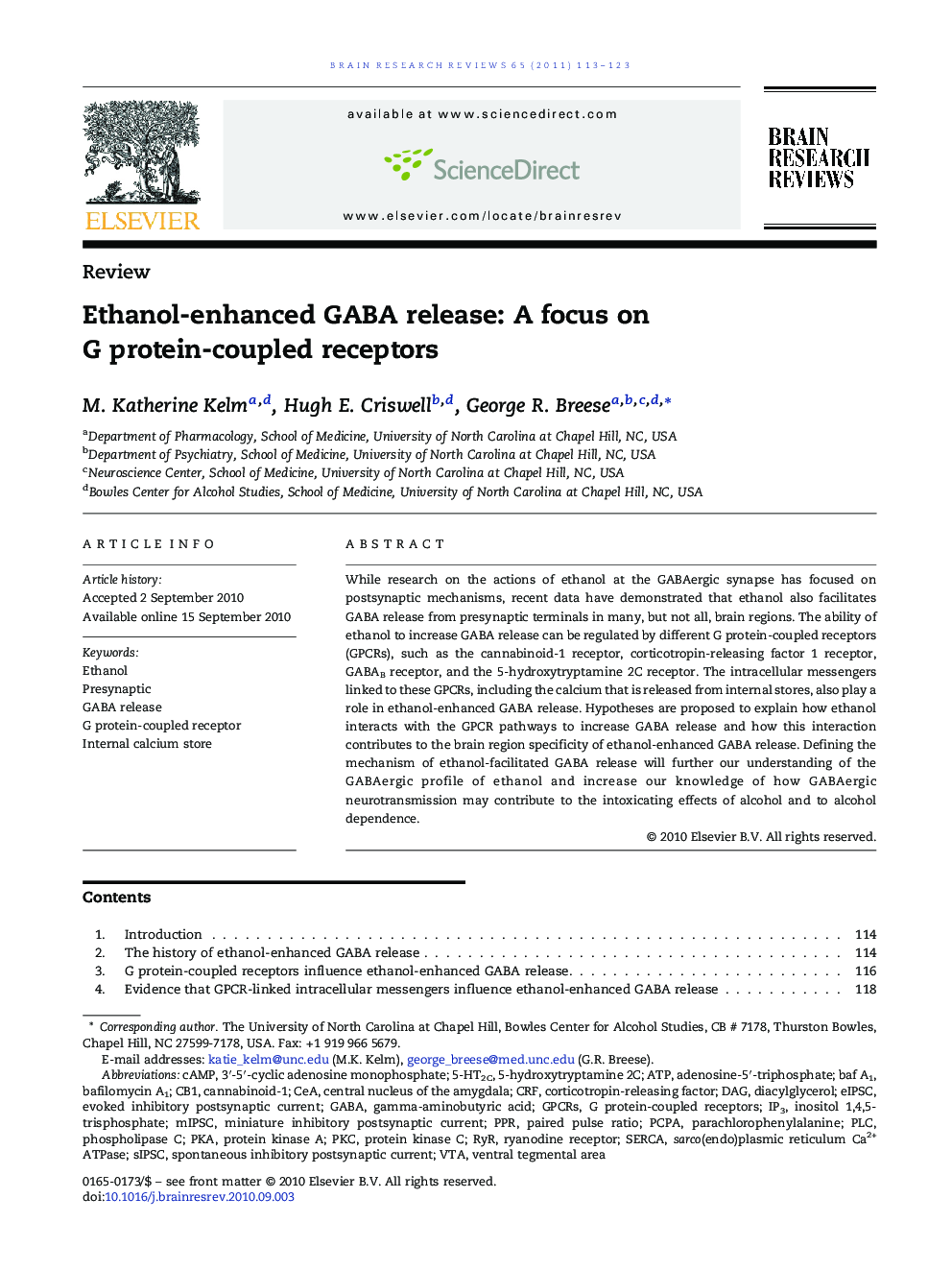| Article ID | Journal | Published Year | Pages | File Type |
|---|---|---|---|---|
| 4333671 | Brain Research Reviews | 2011 | 11 Pages |
While research on the actions of ethanol at the GABAergic synapse has focused on postsynaptic mechanisms, recent data have demonstrated that ethanol also facilitates GABA release from presynaptic terminals in many, but not all, brain regions. The ability of ethanol to increase GABA release can be regulated by different G protein-coupled receptors (GPCRs), such as the cannabinoid-1 receptor, corticotropin-releasing factor 1 receptor, GABAB receptor, and the 5-hydroxytryptamine 2C receptor. The intracellular messengers linked to these GPCRs, including the calcium that is released from internal stores, also play a role in ethanol-enhanced GABA release. Hypotheses are proposed to explain how ethanol interacts with the GPCR pathways to increase GABA release and how this interaction contributes to the brain region specificity of ethanol-enhanced GABA release. Defining the mechanism of ethanol-facilitated GABA release will further our understanding of the GABAergic profile of ethanol and increase our knowledge of how GABAergic neurotransmission may contribute to the intoxicating effects of alcohol and to alcohol dependence.Research Highlights► Ethanol facilitates GABA release in some, but not all, brain regions. ► Different GPCRs regulate ethanol-enhanced GABA release. ► Intracellular messengers alter the ability of ethanol to increase GABA release.
